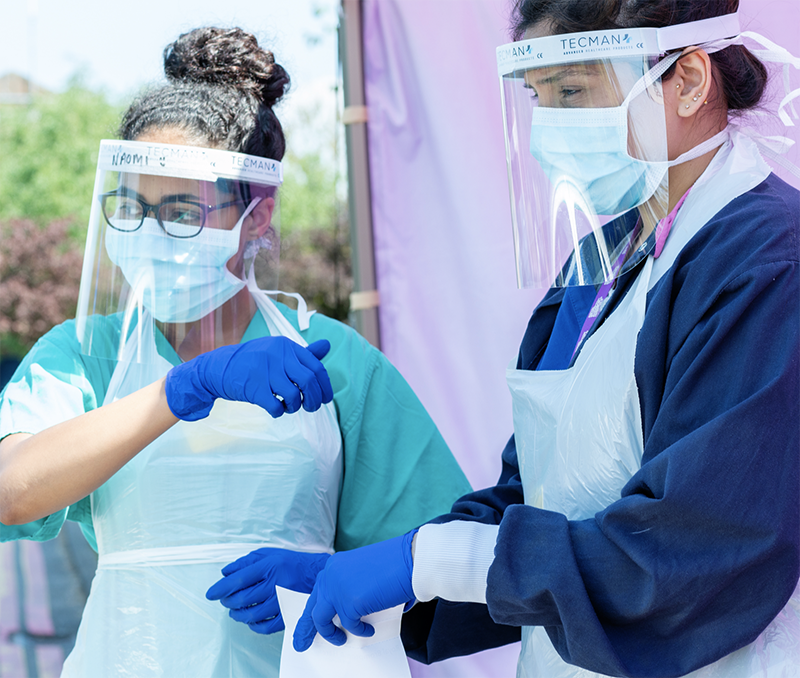For a time in autumn 2020, when areas of the country such as Manchester and the North-West were experiencing a second wave of COVID-19, patient numbers in London and the South East remained stable and relatively low.
But towards the end of November the situation began to deteriorate and the number of people requiring hospitalisation for COVID-19 began to rise rapidly.
Interim chief executive, Dr Richard Grocott-Mason, wrote to staff shortly before Christmas to inform them that the Trust’s leadership team was working day and night with NHS partners, officials, and suppliers to ensure that the impact of the second wave was manageable.
He said: “In the early spring we all pulled together to work against a common enemy; we need to do that again, but with a vaccine now available, it should be for the last time. Ahead of us are the last few steps in a marathon, and while they may be the hardest, the prize when we cross the finishing line will be more than worth it.
“There are many families in England who, without the care that you provided earlier in the year, would be spending their first Christmas without a loved one.”
During the first COVID-19 wave, non-urgent elective care was suspended nationally, but during the second wave this was not the case, many procedures and diagnostic services continued.
The shortages of personal protective equipment (PPE), a feature of the first COVID-19 wave, did not recur; staff had access to a regular supply and new storage facilities meant less reliance on deliveries from central sources.
The challenges faced during the second wave were significant, but with careful planning we were able to deliver a robust response while reassuring staff that their health, wellbeing and safety was a priority.
Discover more:
Supporting the health and wellbeing of staff
Recognising the vital importance of supporting our staff during the second wave was a major priority and a number of new initiatives were introduced. Read more
Changing working practices
To reduce the risk of spreading COVID-19 and provide the safest possible environment for staff and patients, a radical re-think of the way services were delivered took place during 2020. Read more
Administering medication at home
IV therapy is medication given intravenously (through the veins) straight into the bloodstream through long flexible tubes called IV lines. Every year, hundreds of patients are admitted for lengthy inpatient stays for IV therapy. Read more
Specialist care for patients suffering long-term effects of Covid
Following the first wave of the pandemic, innovative post-COVID-19 follow-up care was established to help survivors of the virus with their long-term recovery. Read more
Delivering the COVID-19 vaccination programme
In January 2021, the first delivery of the COVID-19 vaccination arrived at our hospitals. Read more
ECMO saving lives
ECMO (extracorporeal membrane oxygenation) supports recovery after major life-saving surgery or life-threatening illness by oxygenating blood outside the body and returning it... Read more
A patient's view: Raj Nair, a recovered COVID-19 patient thanks staff for giving him a second chance at life
Raj Nair, who was on ECMO (extracorporeal membrane oxygenation) for 62 days, longer than any other patient treated at our hospitals, thanked staff for performing ‘a miracle’ and giving him a second chance at life. Read more
Some of the many messages of support we received during the pandemic Read more
Acts of public kindness and benevolence
During both waves of COVID-19, public support surged for our staff as they fought to overcome the immense challenges of treating patients who were critically ill with COVID-19, leading to an unprecedented outpouring of kindness and benevolence. Read more

< Contents
